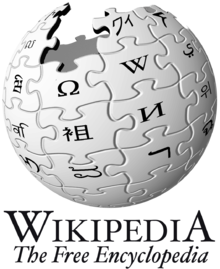 A while back I asked my son-in-law, who works for Cisco in San Jose, what kind of job he would pick if he were able to choose from anything available at his company. He told me that he’d really like to work on business strategy, maybe performing strategic business analysis.
A while back I asked my son-in-law, who works for Cisco in San Jose, what kind of job he would pick if he were able to choose from anything available at his company. He told me that he’d really like to work on business strategy, maybe performing strategic business analysis.
Everyone who has been subjected to a traditional business education in North America or Europe, in particular anyone who has completed an MBA program, is – or at least thinks they are — familiar with the concept of Strategic Business Analysis. I, for one, thought I knew what the term meant: a rigorous examination of a firm’s strengths and weaknesses in its current competitive environment, coupled with an assessment of what its capabilities might allow it to achieve within some reasonable future time frame.
I got curious and decided to google the phrase and see what kind of results would appear on my computer screen. Try it for yourself and you’ll find over 19 million items showing up in the specific search result for “strategic+business+analysis.” [If you just type the words “strategic business analysis” in the search bar you’ll get over 95 million results.] Unfortunately, you won’t find out exactly what it is. What you will find out is that most schools with a business curriculum teach it, many consulting firms say that they do it, lots of companies are looking for people to fill jobs where they will do it, and hundreds of thousands of people want to land jobs as strategic business analysts.
 I wasn’t happy with that result, so I checked in with Wikipedia, one of my favorite reference resources. While Wikipedia has no entry for strategic business analysis, it does provide a lengthy article on business analysis. The closest I could get to something that looked like what I would recognize as strategic business analysis was detailed in the Wikipedia article under “Enterprise analysis or company analysis” and included the following description:
I wasn’t happy with that result, so I checked in with Wikipedia, one of my favorite reference resources. While Wikipedia has no entry for strategic business analysis, it does provide a lengthy article on business analysis. The closest I could get to something that looked like what I would recognize as strategic business analysis was detailed in the Wikipedia article under “Enterprise analysis or company analysis” and included the following description:
Focuses on understanding the needs of the business as a whole, its strategic direction, and identifying initiatives that will allow a business to meet those strategic goals.
That seemed to fit closely enough to my originally offered definition that I was willing to work with it. Looking deeper, though, I got mired in what I feel is the fundamental problem with most approaches to strategic business analysis. Just about everyone doing strategic business analysis relies on one or more analytic techniques, all of which are designed to get those performing the analysis to look broadly and deeply at the firm’s competitive situation in order to select strategic options most likely to lead to success for the organization. The Wikipedia article lists eight widely used techniques, some of which I am familiar with and a few I’ve never heard of:
There are enough acronyms on this list to keep you busy for a week, trying to figure out what they mean. Each approach suggests that if you diligently follow the step-by-step process outlined, you’ll get a great result. But these and other techniques overlook a simple truth. People do strategic business analysis, not robots. People get distracted. People work under deadline pressure and hurry to complete tasks. People tend to rely on only parts of an analysis model, and ignore others.
 Most importantly, just like with crossword puzzles, we often get disconfirming information about previous assumptions we have made. When that happens while working a crossword puzzle, we erase and try again. In business, when we get disconfirming information, we tend to ignore it or deny it. We look even harder to find something, anything, that seems to confirm our earlier assumptions. Maybe that’s because there is no answer key in business. Nobody created the puzzle, so there is no single solution.
Most importantly, just like with crossword puzzles, we often get disconfirming information about previous assumptions we have made. When that happens while working a crossword puzzle, we erase and try again. In business, when we get disconfirming information, we tend to ignore it or deny it. We look even harder to find something, anything, that seems to confirm our earlier assumptions. Maybe that’s because there is no answer key in business. Nobody created the puzzle, so there is no single solution.
The world is a messy place. It is unpredictable. As a result, strategic business analysis will always be messy, iterative and nonlinear. We should get used to the idea.